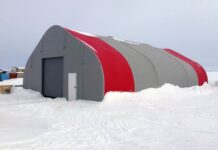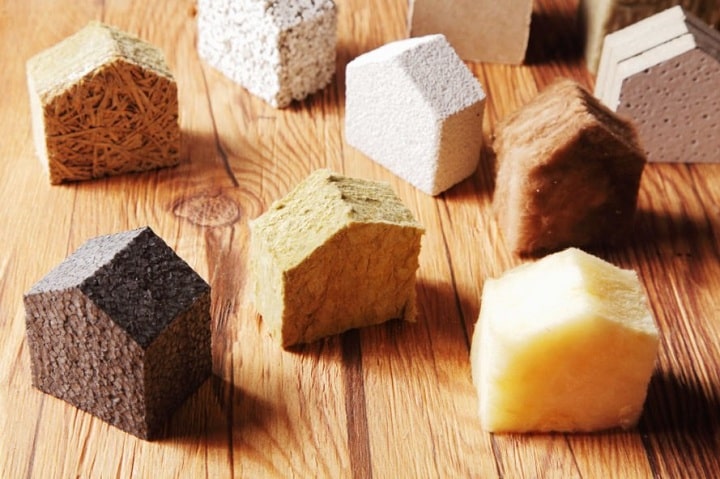A new generation of eco-friendly insulators has emerged, and today’s homeowners want to make decisions that positively influence the environment and traditional repairs. Eco-friendly insulating products result from production processes that employ safe and sustainable materials and procedures. However, the advantages of using sustainable insulating materials in your construction go beyond environmental protection.
Adding an eco-friendly insulating layer to your green home will help you save energy and money. Eco-friendly insulation will aid green homes in colder climates by generating more heat to maintain a constant temperature.
The raw materials used in production are frequently recyclable trash, and the finished goods are also recyclable. Consequently, if you’re remodeling your home or working on a substantial commercial project and searching for a marketplace for building materials, then worry no more. Read on to learn some of the benefits of using eco-friendly insulators for a green home.
Advantages of Using Eco-Friendly Insulation Materials for a Green Home
Sustainability
Eco-friendly insulating materials are long-lasting and have a shared environmental effect. The ecological consequences of our everyday actions have received a lot of attention recently, and it is our responsibility to work toward sustainable solutions. From production to disposal, eco-friendly insulation materials will create little or no environmental impact.
Unlike traditional insulation, eco-friendly insulation materials are designed to withstand a variety of external environmental variables for an extended period. Regardless of the severe weather outside, upgrading to eco-friendly insulation will provide a pleasant and comfortable living space. These materials are built to last, so if you choose eco-friendly insulation, you won’t have to replace it for a long time.
Health Concerns
One of the significant benefits of an eco-friendly insulator is its harmless nature. Most of these materials are gentler on the eyes, skin, upper respiratory tract, the skin, and many are recycled materials, diverting debris away from landfills. Eco-friendly insulators are thus safe for your overall health since their breathability and ventilation capabilities offer the most crucial health advantage.
The most efficient option for breathability and vapor permeability is insulation derived from natural materials. Since the eco-friendly materials bind and release moisture as needed, they can manage the humidity levels and excess moisture in their air in your interior environment. Excess moisture may cause problems like dampness and mold growth, which are bad for a home’s durability and comfort.
Save on Energy and Money
Eco-friendly materials with remarkable insulating properties will help you save energy in your house. The greater the heat resistance number, the easier it will be to regulate your home environment. Your HVAC system will function less when energy is conserved, resulting in less gas and fuel usage.
On the other hand, artificial insulators will make you spend a lot of money to have your heating, ventilation, and air conditioning system cool or heat your home. Poor insulation permits conditioned air to depart while allowing outside air to enter, resulting in a significant waste of money on inefficient heating and cooling.
Safety
Using eco-friendly materials to insulate your house is safe and presents no harm to your physical wellbeing. Furthermore, eco-friendly insulating materials are fire-resistant or are chemically treated with fire retardants. Aside from being fire-resistant, these materials are safe to use in your house because they do not contain any hazardous materials.
Insulation Improves Comfort
The degree of radiant heat exchange between your body and the environment accounts for about 40% of your sense of comfort. By controlling temperature and reducing sound, effective insulation in your house makes it a more comfortable living space. Natural insulation mitigates excessive heat, cold and noise pollution, thanks to its higher bulk.
Reduced Manufacturing Costs
Some eco-friendly insulation materials, such as cellulose, need up to ten times less embodied energy to manufacture than other traditional insulating materials. Embodied energy translates into production expenses, which are significantly lowered when producing eco-friendly insulation. Reducing production energy implies releasing fewer hazardous gasses and pollutants into the atmosphere.
Resistance to Rodents
Natural insulating materials are particularly resistant to rats, insects, and other pests. Therefore, these materials can save you from costly repairs and rebuilds.
Parting Words
In conclusion, based on the advantages discussed above, eco-friendly insulation materials may improve overall wellbeing and positively influence you and your loved ones’ quality of life. By selecting eco-friendly insulating materials and home appliances, you will lessen the environmental effect while ensuring that your house is sustainable.




































